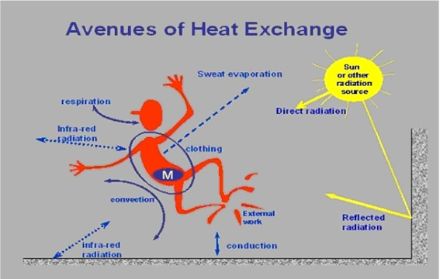Service Navigation
Search
The heat wave over Europe in summer 2003 exemplified the vulnerability of our society against excess heat. About 25000 to 30000 deaths were directly associated with the heat wave. Besides the extreme impact of such high temperatures, the deviation from our usual thermal environment influences our well-being and our productivity. Predictions of the thermal conditions can help to warn people when there is a danger of unusual conditions.One of the fundamental issues in human biometeorology is the assessment and forecast of the thermal environment in a sound, effective and practical way.
However, none of the more than 100 available assessment procedures can be taken as satisfactory considering thermal-physiology and heat exchange theory and the vast majority of them show unacceptable shortcomings. The concept of UTCI was then developed as an equivalent temperature. This involved the definition of a reference condition to which all other climatic conditions will be compared. The equivalence between real and reference conditions was based on an equivalence of the dynamic physiological response between both. As this dynamic physiological response is multidimensional (body core temperature, sweat rate, skin wittedness etc at different time points), a single dimensional strain index was calculated based on principal component analysis.
The UTCI as an equivalent temperature for a given combination of wind, radiation, humidity and air temperature is then defined as the air temperature in the reference condition of humidity, radiation and wind speed, which produces the same strain index value. The associated assessment scale was developed from the simulated physiological responses and comprises 10 categories that range from extreme cold stress – very strong cold stress – strong cold stress – moderate cold stress – slight cold stress – no thermal stress – moderate heat stress – strong heat stress – very strong heat stress – extreme heat stress.
